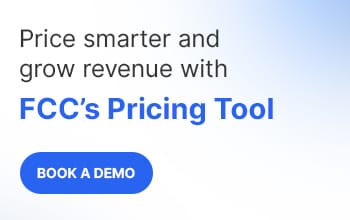Table of Contents
- What is odd-even pricing
- Does odd-even pricing work?
- What companies use odd-even pricing?
- What are odd-even pricing examples?
- Advantages and disadvantages of odd-even pricing
- Conclusion
What is odd-even pricing?
Odd-even pricing is a strategic pricing approach where the final digits of a product or service price are adjusted to end in an odd number. For instance, prices such as ₹49.95 or ₹199.75 are examples of this strategy. Conversely, odd-even pricing also encompasses prices ending in specific even numbers, such as ₹200.00 or ₹59.50, representing the even aspect of the strategy.
Fundamentally, this is a psychological pricing technique that leverages consumer perception of prices. The primary objective is to make price points attractive to targeted buyer segments.
The psychology behind odd-even pricing
Odd-even pricing leverages a psychological phenomenon known as anchoring. The human brain tends to focus on the initial digits of a number, anchoring the perception of value. For instance, $29.99 feels closer to $20 than $30, even though the difference is just a penny. This subconscious bias makes odd-priced items seem like a better deal, even if the actual savings are minimal. Retailers often leverage this psychological aspect by setting prices just below round numbers to create a sense of value without significantly impacting their profits.
Does odd-even pricing work?
Yes, odd-even pricing is effective. This retail pricing strategy leverages psychological principles to influence consumer behavior. The left-digit effect makes consumers focus on the first digit of a price, perceiving ₹199.99 as significantly cheaper than ₹200.00.
The image effect associates odd prices with discounts and even prices with quality. The perceived gain effect makes consumers feel they are getting a better deal with odd prices. However, it's important to note that excessive use of odd-even pricing can diminish its effectiveness and may even be perceived as manipulative.
What companies use odd-even pricing?
Odd-even pricing is widely used across various industries to influence consumer perception and drive sales. Retailers, such as supermarkets and clothing stores, frequently use odd pricing to create a sense of a bargain. Ecommerce platforms also employ this strategy to attract price-sensitive customers.
Luxury brands, like Le Creuset, use even pricing to convey quality and exclusivity. Service providers, including lawyers and tutors, often use even pricing to reflect professionalism and completeness. This approach is flexible and customizable according to different market segments and business objectives.
What are odd-even pricing examples?
Odd-even pricing is a common strategy used by various retail brands to influence consumer perception and drive sales. Let's have a look at some famous examples:
- Walmart: Known for its EveryDay Low Prices (EDLP) strategy, Walmart often uses odd pricing, such as $99.97 or $199.88, to create a sense of a bargain.
- Brooks Brothers: This high-end men's clothing store uses even pricing for its premium products, such as pricing a suit at $1,499 instead of $1,500, to convey quality and exclusivity.
- Target: Another major retailer, Target, uses odd pricing like $49.99 or $99.95 to attract price-sensitive customers.
Advantages and disadvantages of odd-even pricing
Odd-even pricing can be a valuable tool for retailers looking to increase sales and create a positive perception of their products. However, it is important to use this strategy carefully and to consider the potential risks and limitations.
Advantages
- Perception of a Bargain: Odd-even prices create an illusion of a good deal. Customers are more likely to perceive a price ending in a 9 as being lower than a price ending in a 0. This psychological effect can encourage impulse purchases.
- Increased Sales: Studies have shown that odd-even pricing can lead to increased sales. Customers may be more willing to purchase a product at a price that seems slightly lower, even if the difference is minimal.
- Reduced Price Sensitivity: Odd-even pricing can help to reduce customers' price sensitivity. By focusing on the odd number at the end of the price, customers may be less likely to compare prices closely.
- Marketing Strategy: Odd-even pricing can be a powerful marketing tool. It can be used to create a sense of urgency or exclusivity, and it can help to differentiate a product from competitors.
Disadvantages
- Damaged Brand Perception: Odd pricing may lead customers to focus on the price tag rather than the product itself. This retail pricing approach can result in low customer retention, as buyers may switch to other products when prices change, impacting long-term profitability.
- Incorrect Perception of Value: Overemphasis on odd and even pricing can create a misleading perception of a product's value. Odd prices may be seen as discounts, while even prices may be perceived as indicators of luxury, potentially distorting the true value.
- Miscommunication and Misinformation: Odd-even pricing strategies can create a coercive vision of what businesses offer. Companies may use this approach to artificially enhance the perceived value of products, leading to consumer misinformation and potential manipulation.
Conclusion
Odd-even pricing is a powerful retail pricing method used by businesses to influence consumer behavior and drive sales. It offers advantages such as motivating impulse purchases, encouraging larger buys, and enhancing marketing strategies. However, it also has potential drawbacks, including damaging brand perception, creating incorrect value perceptions, and leading to consumer misinformation. When used effectively, odd-even pricing can be a valuable tool for businesses to maximize profits and attract targeted buyer segments.
FAQ
Another term for odd-even pricing is psychological pricing. This pricing strategy leverages consumers' perception of affordable prices, often making them perceive prices ending in odd numbers as being lower than those ending in even numbers, even when the difference is minimal. This psychology of price endings can influence purchasing decisions.
The best numbers to use for odd-even pricing are typically those that end in 7 or 9. These numbers create a strong perception of a bargain while still maintaining a sense of value. For example, $9.99 is often used because it appears lower than $10.00, even though the difference is only one cent. However, it's important to consider the specific product and target market when choosing the best odd number. For luxury items, a higher odd number (e.g., $99.99) might be more effective.
Yes, Walmart frequently uses odd-even pricing. This is a common strategy among retailers, including Walmart, to create a perception of value and encourage impulse purchases. By pricing items at odd numbers (e.g., $9.99), Walmart can make product prices seem lower than their even-numbered counterparts, even though the difference is minimal. This marketing psychology trick can be effective in driving sales and attracting customers.
Stores use odd-even pricing to influence consumer behavior and drive sales. This strategy leverages psychological principles, such as the left-digit effect, where consumers perceive prices ending in odd numbers as significantly cheaper than even numbers. Odd prices create a sense of a bargain, encouraging impulse purchases and higher overall spending. Even prices, on the other hand, convey quality and luxury. This approach helps stores stay competitive, run promotions, and attract customers.

